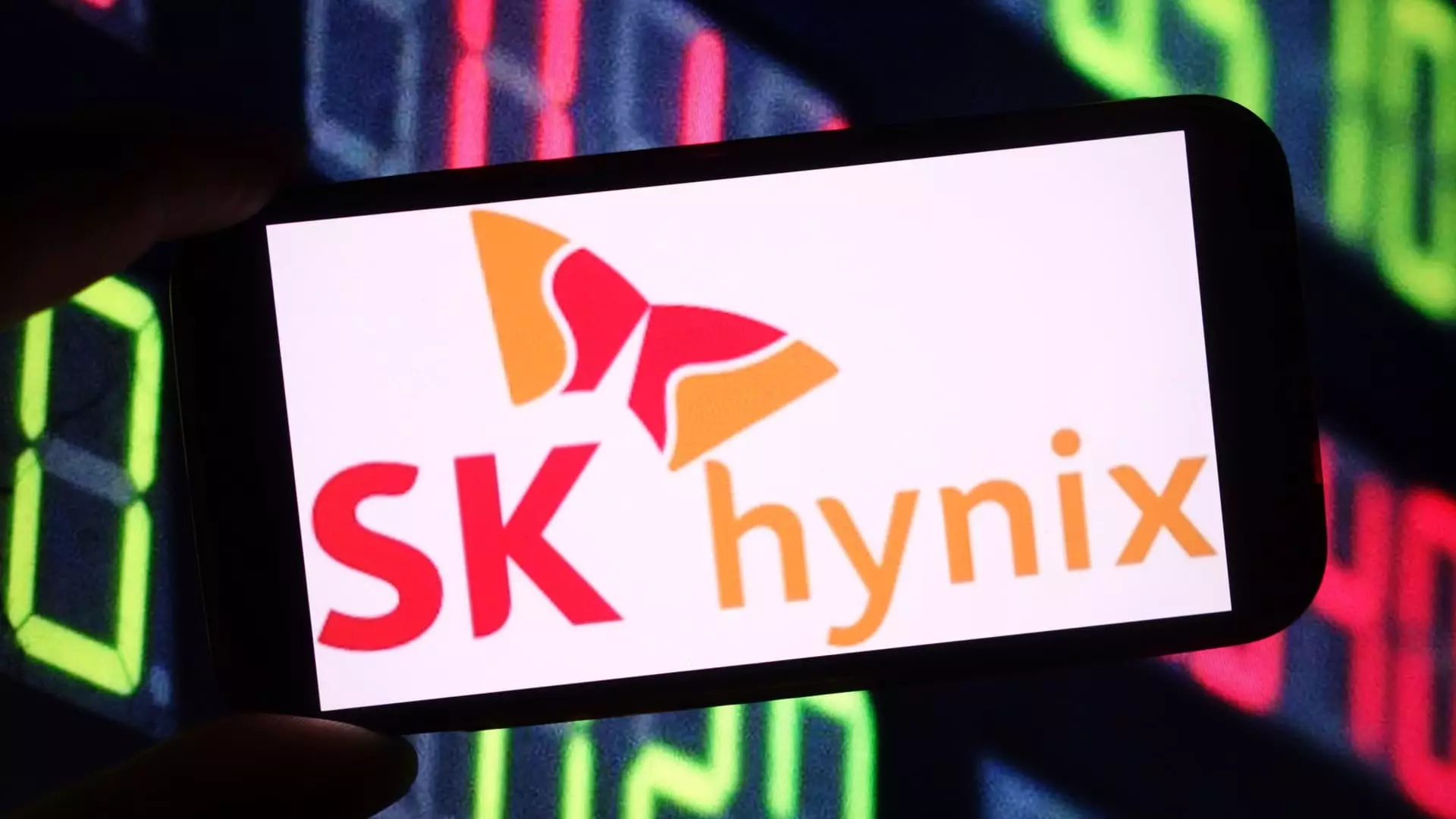In a compelling show of strength, South Korea’s semiconductor giant SK Hynix delivered impressive financial results for the first quarter, exceeding expectations across the board. The company reported revenues of 17.64 trillion won (approximately $12.36 billion), significantly surpassing the analyst forecast of 17.26 trillion won. Operating profit reached an astounding 7.44 trillion won, eclipsing the anticipated 6.62 trillion won. These figures represent a meteoric rise of about 42% compared to the same quarter last year, and an astonishing 158% boost in year-on-year operating profit. The numbers reflect an incredible demand for high bandwidth memory, specifically tailored for artificial intelligence (AI) applications—a sector that is now driving technological advancement globally.
However, despite this stellar quarterly performance, the company faces challenges. Revenue did experience a slight downturn of 11% from the previous quarter, and an 8% decrease in operating profit juxtaposes the record-breaking achievements of December. This decline underscores the inherent volatility linked to the semiconductor market, fueled by fluctuating demand patterns that are difficult to predict.
Macroeconomic Challenges on the Horizon
One significant concern emerging from SK Hynix’s earnings report is the looming threat posed by macroeconomic factors, particularly U.S. tariff policies. An executive from the company articulated this concern in a recent earnings call, emphasizing that while some reciprocal tariff measures have been temporarily suspended, uncertainties still abound. The volatility in demand is likely influenced by the potential imposition of tariffs on semiconductor products. While SK Hynix anticipates limited repercussions on AI server demand, the ripple effects of tariffs could still impact broader components of their business, including consumer electronics such as PCs and smartphones.
Interestingly, the company remains optimistic about the outlook for AI-related products, anticipating that new launches featuring AI capabilities will stimulate demand. As consumers increasingly gravitate towards advanced technology, SK Hynix is strategically positioned to benefit from this trend.
The AI Surge: A Catalyst for Growth
In its earnings release, SK Hynix highlighted the profound impact of AI on the memory market, viewing it not just as a trend but as a genuine driver of technological innovation. The company forecasts an enduring increase in AI investments from major technology firms, fueled by the growth of open-source AI models and national initiatives as “sovereign AI projects” gain traction. A company executive noted that decreasing development costs are propelling a surge in AI initiatives, which bodes well for memory demand.
A notable example highlighted by SK Hynix was DeepSeek’s open-source R1 reasoning model, which has been impressively competitive while utilizing minimal hardware resources. This case serves as a testament to how innovations within the AI sector can create robust demand for memory solutions.
Market Position and Competitive Landscape
As a dominant player in the dynamic random access memory (DRAM) segment—CRUCIAL for PCs, workstations, and servers—SK Hynix has solidified its reputation by becoming a key supplier of high bandwidth memory (HBM) to leading AI companies, including the celebrated U.S. firm Nvidia. The competitive landscape, however, includes formidable rivals such as Micron Technology and Samsung Electronics, which are also aggressively vying for market share in the space.
A report from Counterpoint Research suggests that SK Hynix has impressively captured around 70% of the HBM market by revenue in the first quarter, affirming its status as a market leader. Nevertheless, this dominance is not without its challenges, particularly with the ebb and flow of demand influenced by geopolitical tensions and economic conditions.
Looking Ahead: Navigating Uncertainty
While SK Hynix’s financial performance provides a compelling narrative of success and opportunity within the AI memory market, the shadow of economic uncertainties looms large. The company’s ability to navigate these challenges will be critical in determining whether it can maintain its meteoric rise amid shifting market dynamics. The emphasis on AI development hints not only at a bright future for SK Hynix but also at the transformative potential of technology in the broader landscape.
In an era where technology and innovation are constantly in flux, SK Hynix stands at a pivotal junction, with the promise of great growth tempered by the necessity of strategic resilience.

